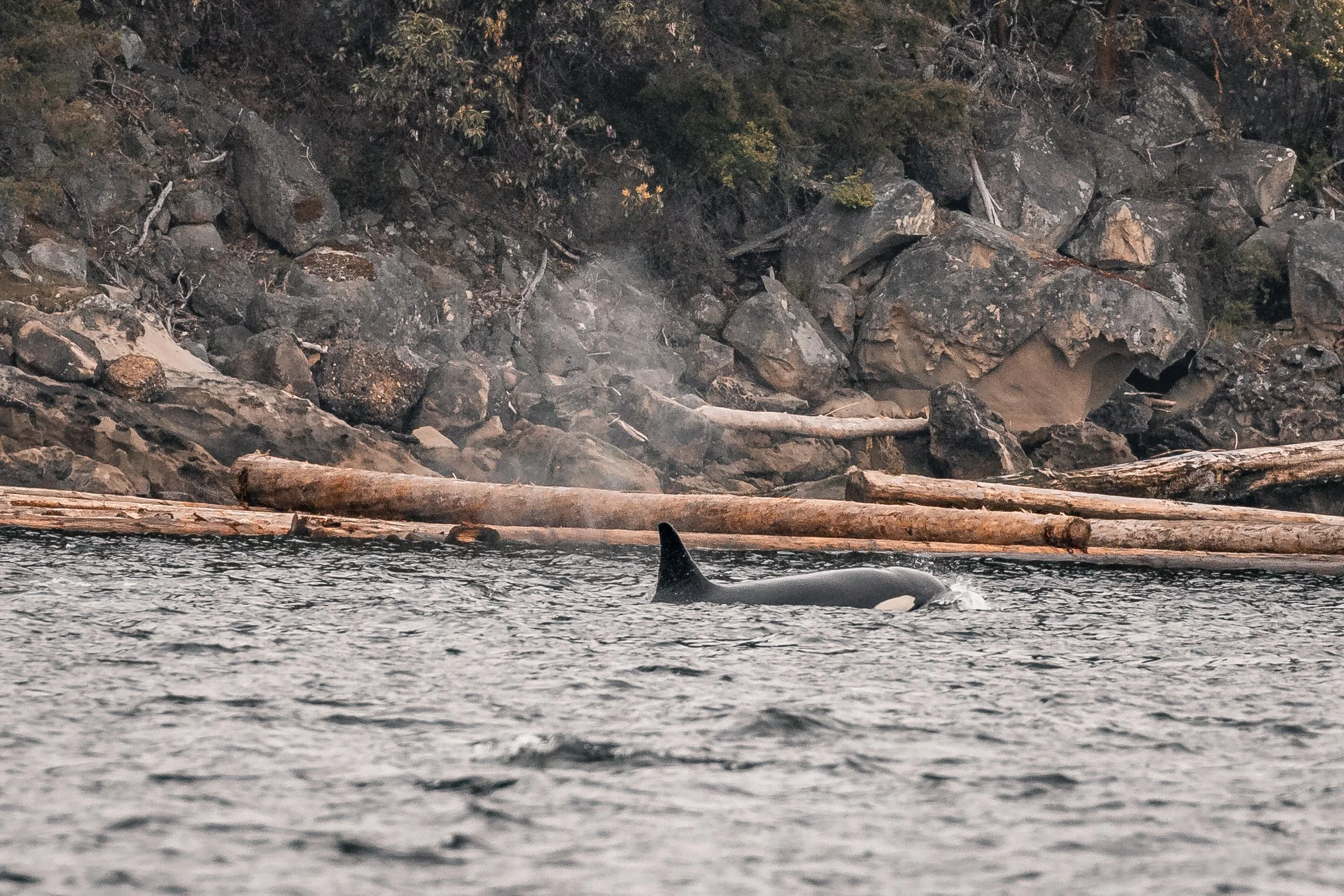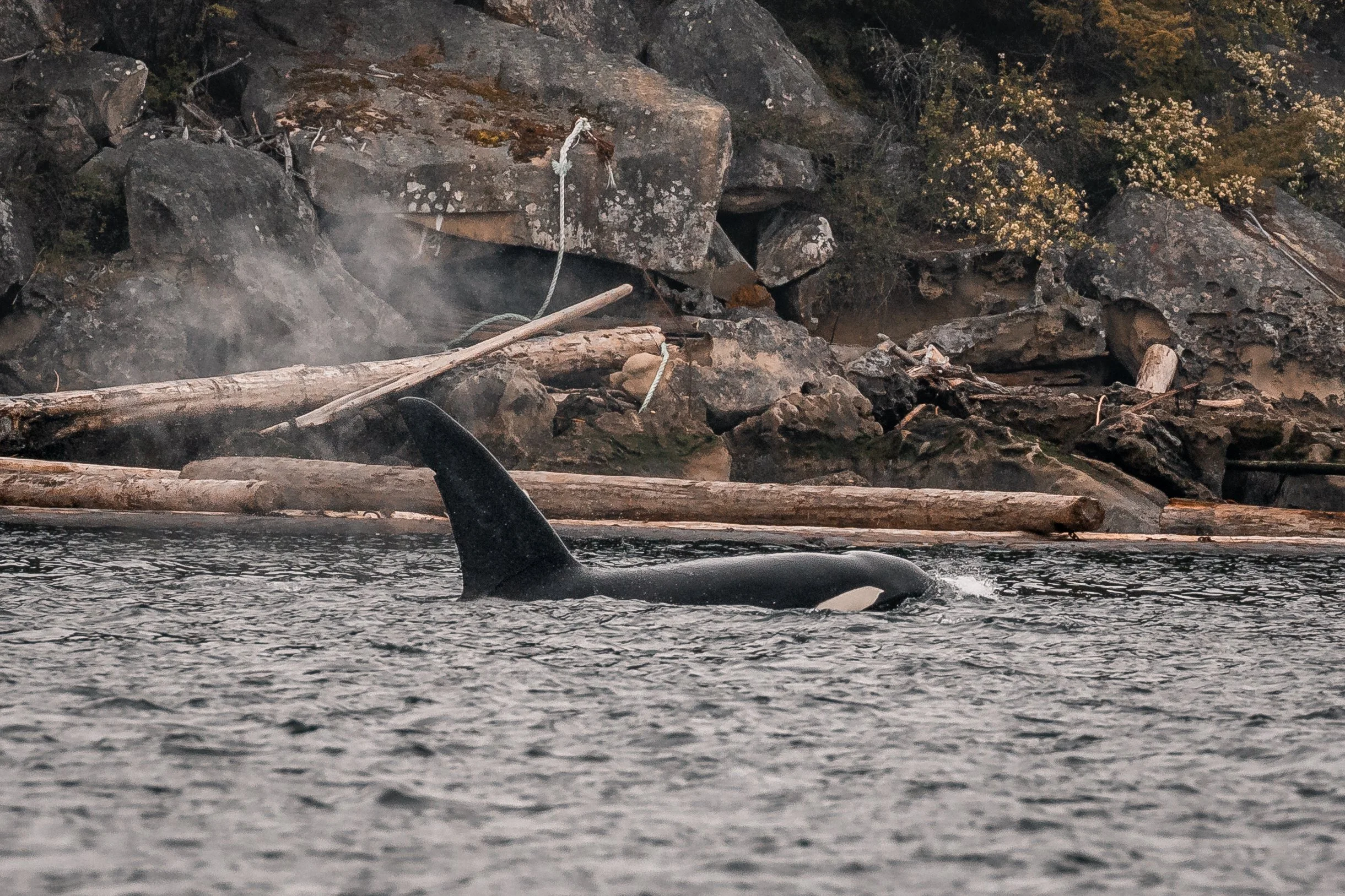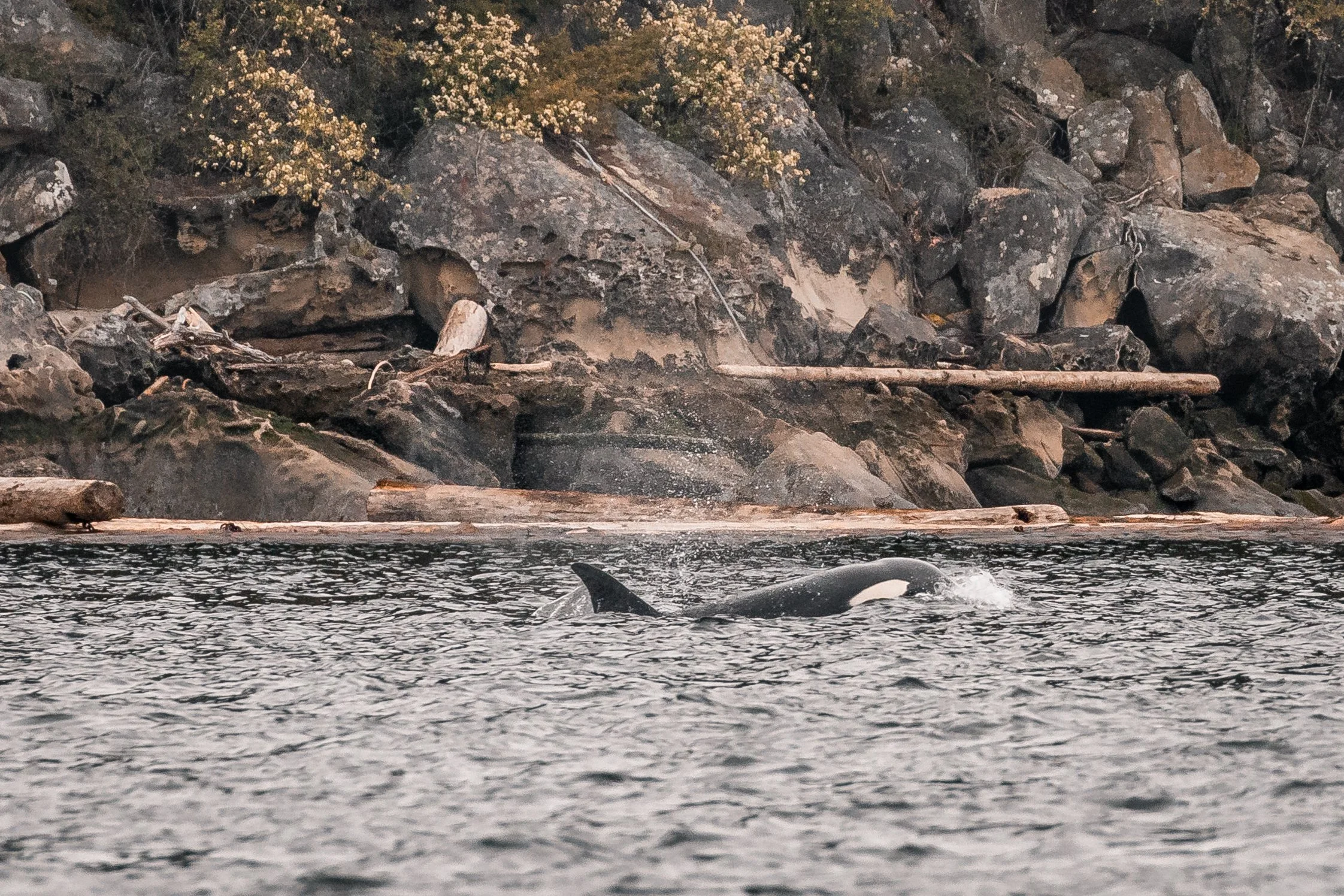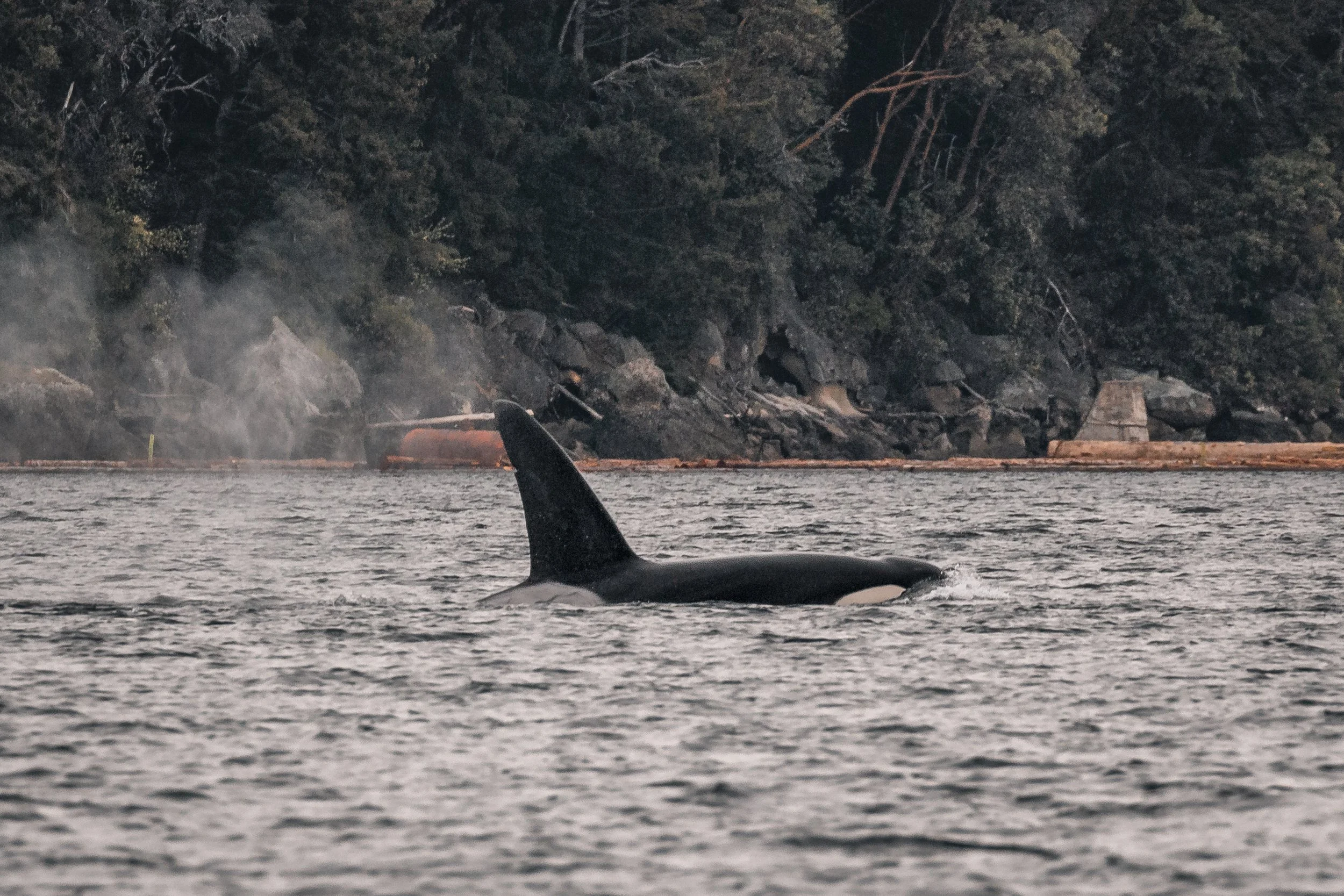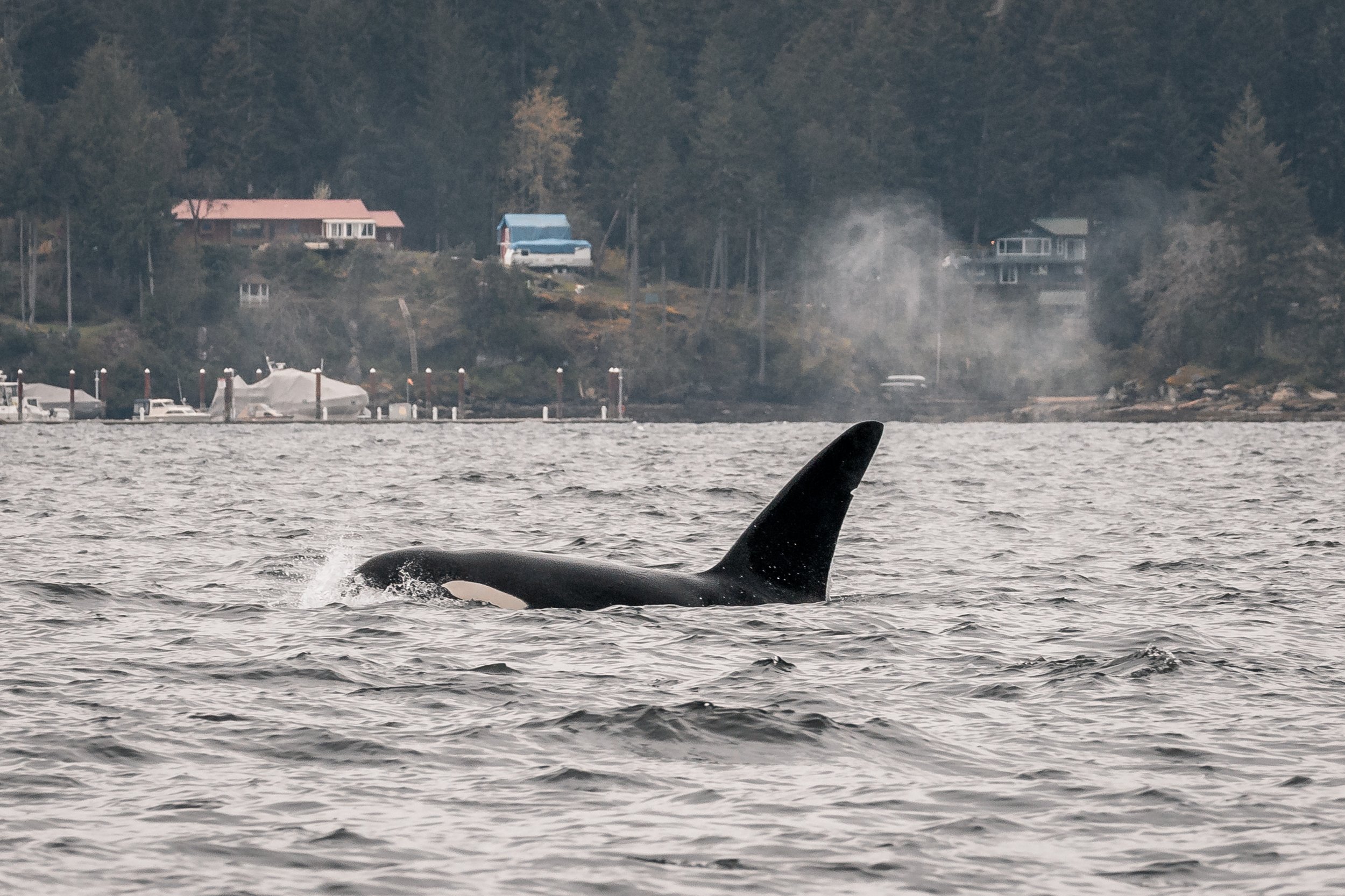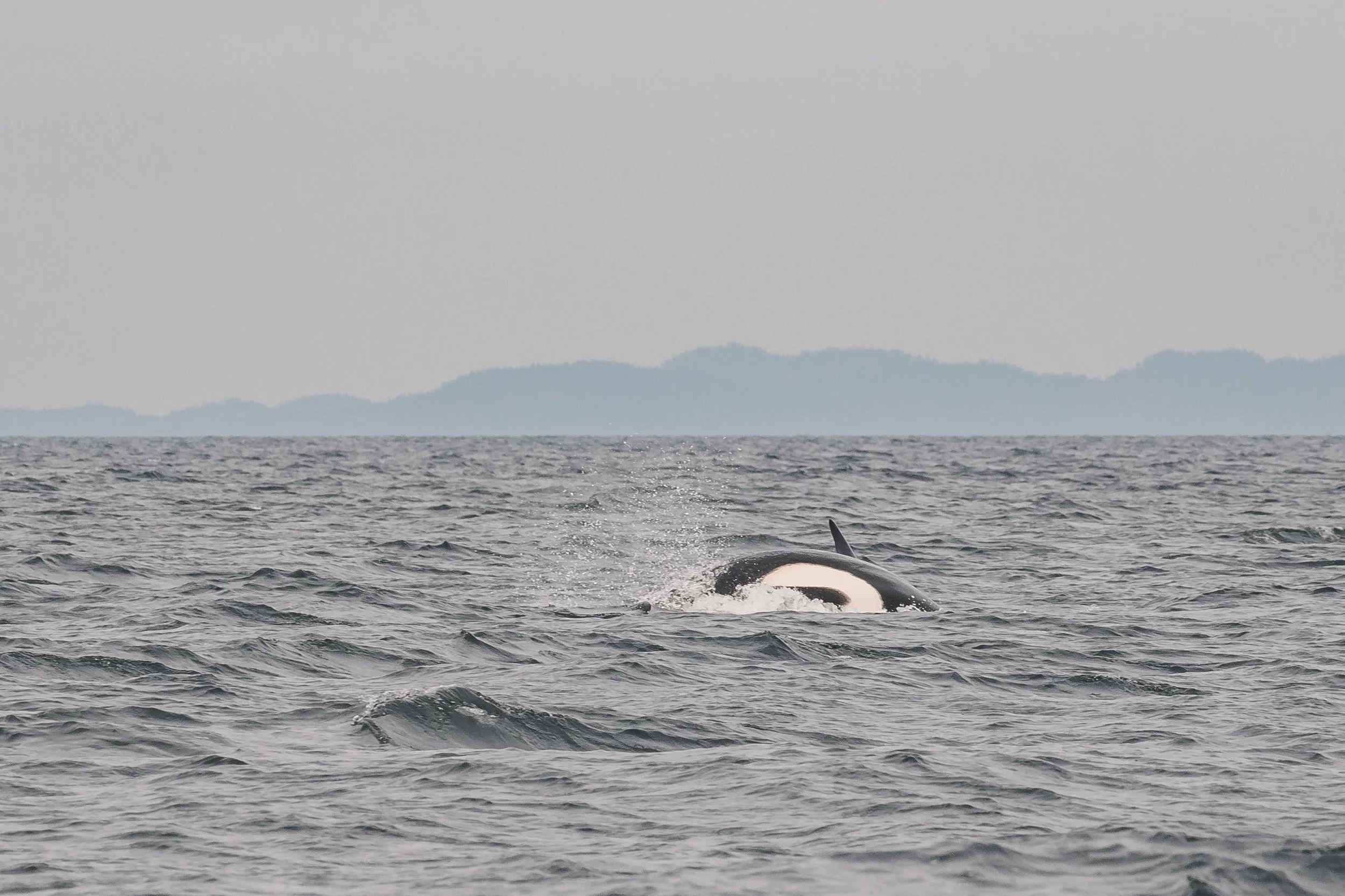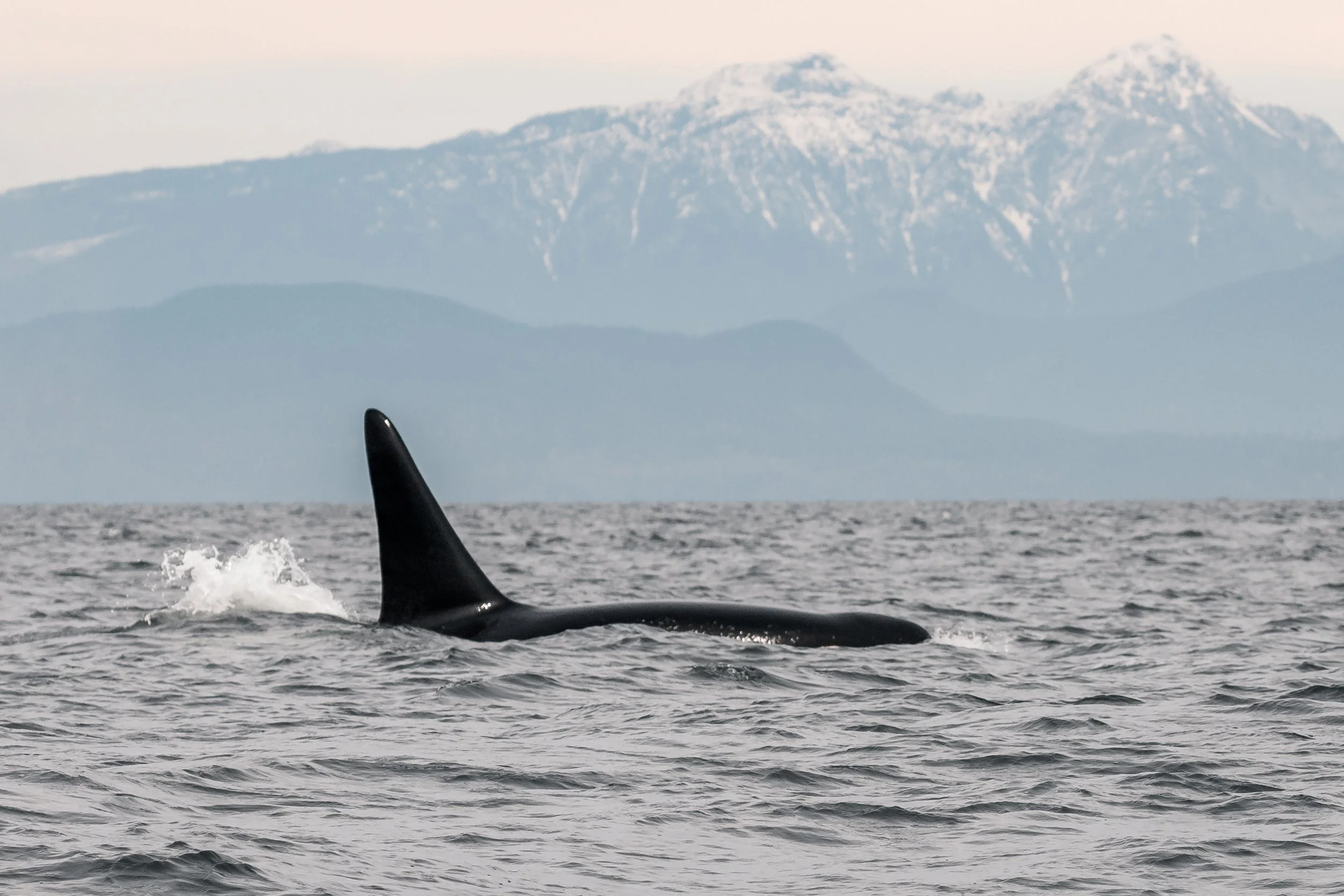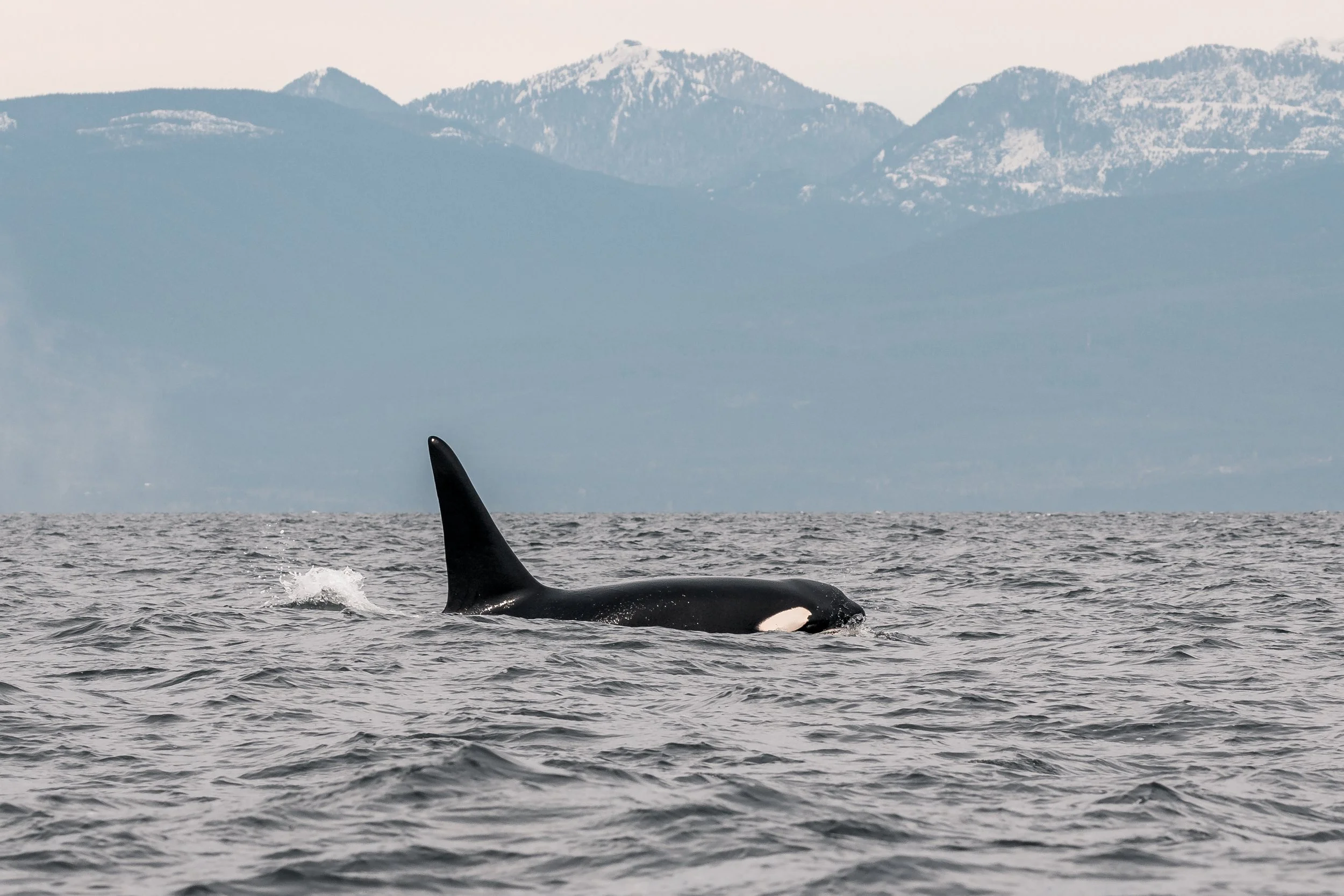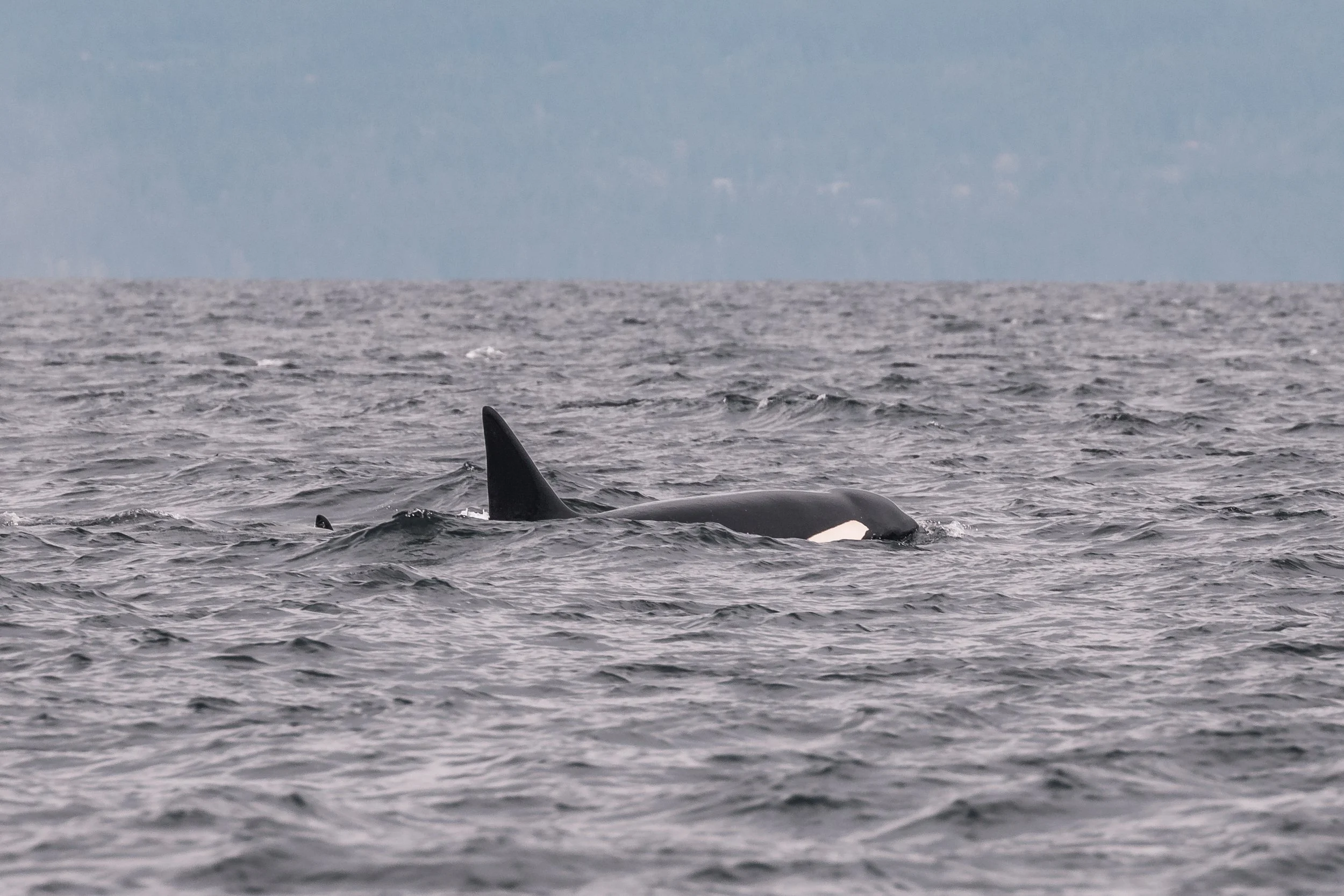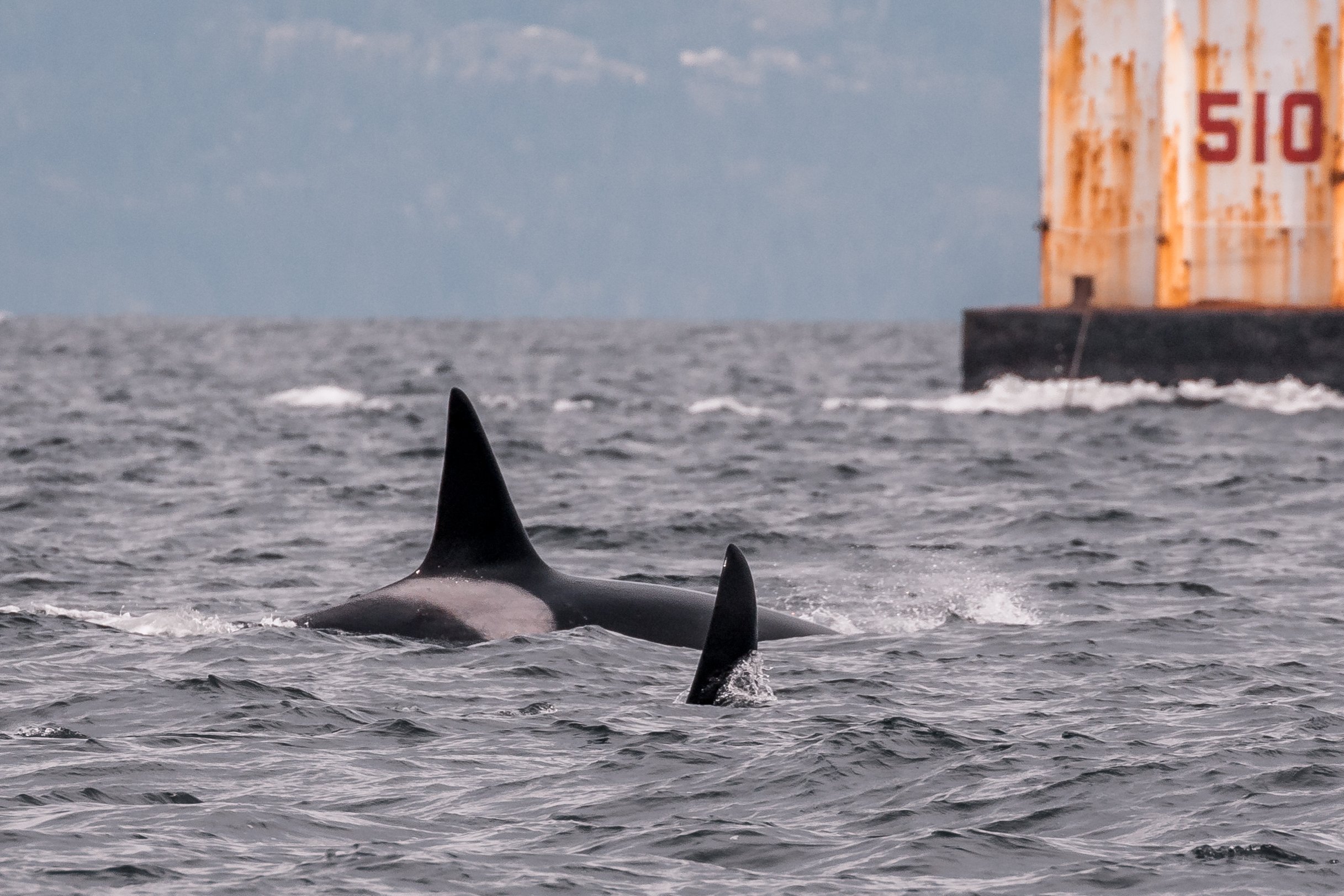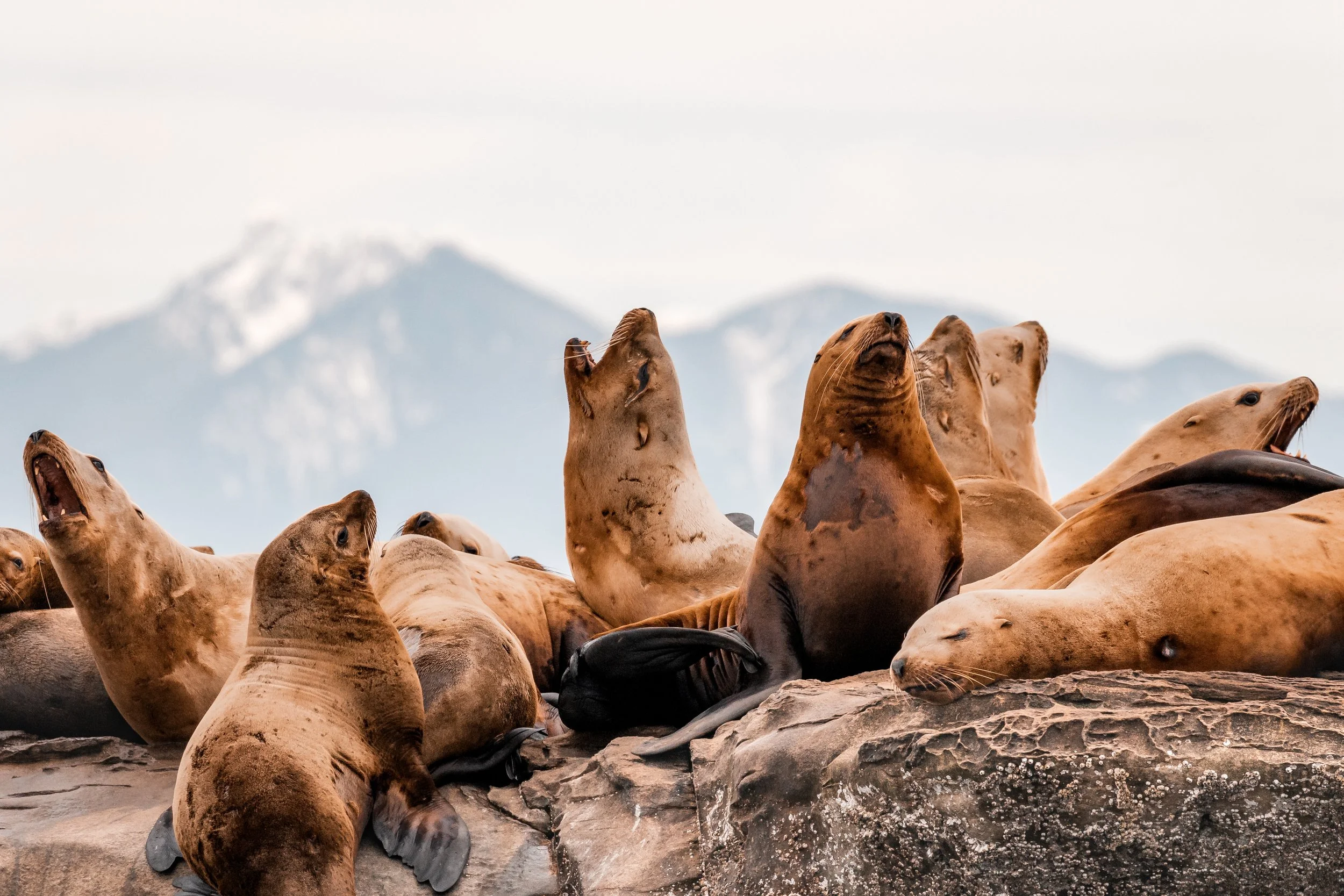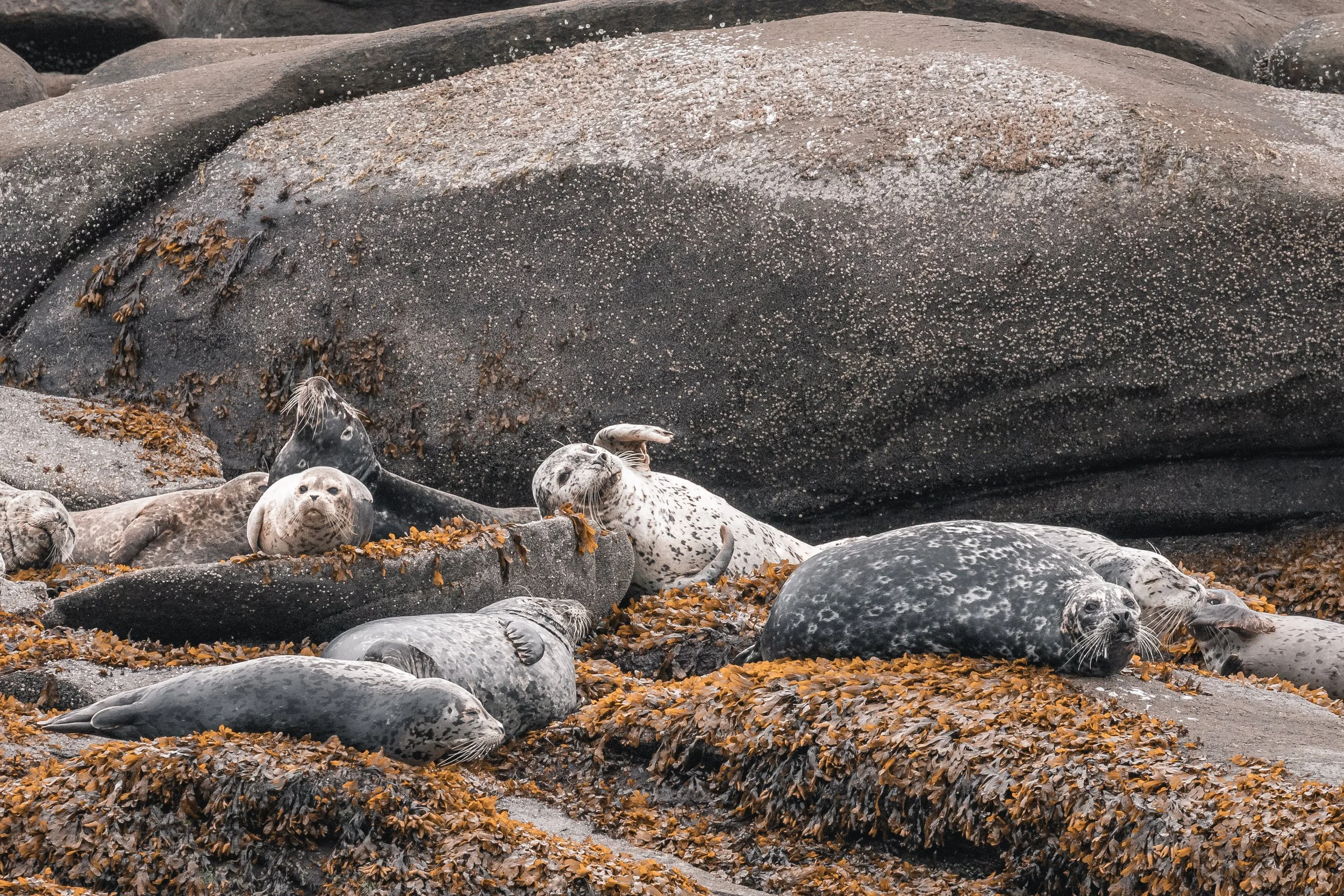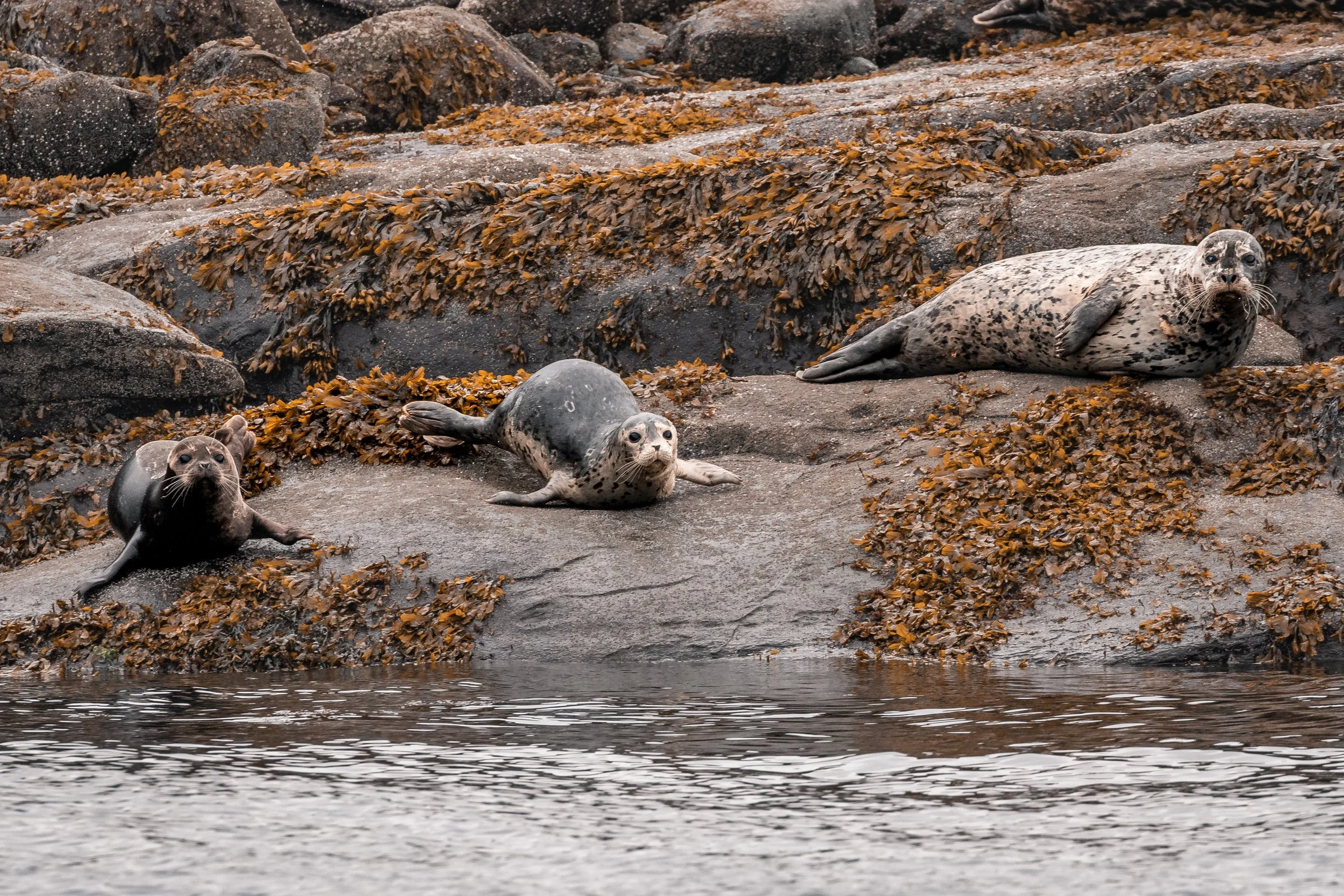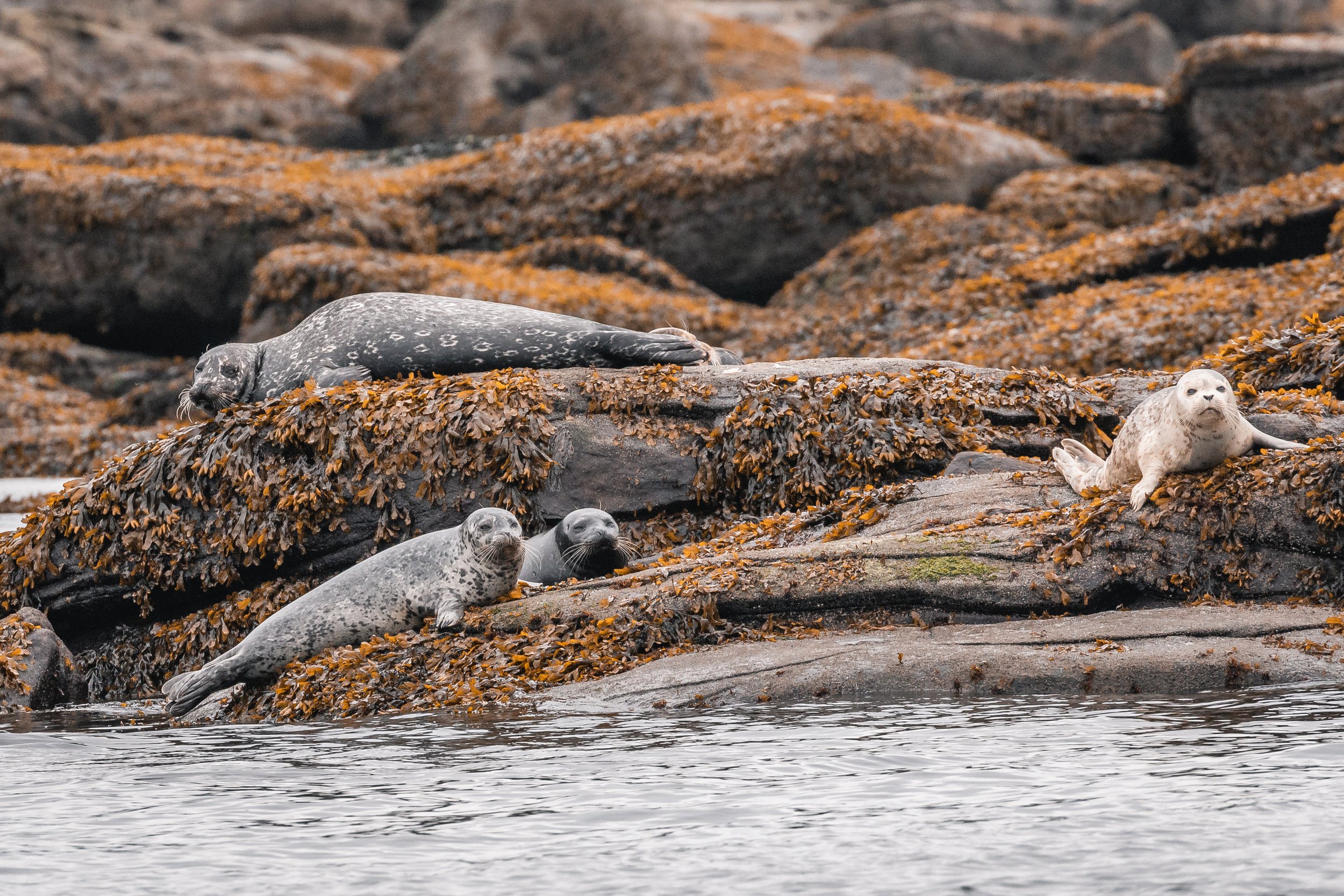April 20th - 2 T-parties on opposite sides of Gabriola Island
Kula, our semi-covered vessel, left the Nanaimo harbour early today with a private charter, and it was a good thing we did. It took next to no time to find our first group of whales as they were traveling along the Gabriola cliffs heading for Dodd Narrows.
As we watched these whales traveling it was hard to get a good idea of who was there because they were spread out far and surfacing erratically We were able to confidently ID the T018’s (Esperanza, Nootka, Galiano, and Spouter) and after some double checking in the office we were able to confirm that the T023D’s were still hanging out with them.
Today this group was traveling split apart, with half the T018’s and half the T023D’s traveling as one group and the other half traveling a bit further behind. We watched as the first half of the party traveled through Dodd Narrows, and then followed as the second half went through. The currents were strong this day but the whales seemed unbothered as they passed eager shore-side whale watchers and sail boats in the Narrows.
All the photos today were taken by Marine Naturalist Janine Van der Linden
T019B Galiano.
T019B Galiano
T019B Galiano
T019B Galiano
T019B Galiano
T019B Galiano
T023D5 speeding through the waters.
We left our never-ending T-party heading south through the Gulf Islands after our hour with them and decided to head out through Gabriola Pass to see if we could find harbour seals and sea lions. We watched our furry pinnipeds on the rocks near Valdez before we headed up towards Entrance Island Lighthouse.
As we approached, we were surprised so find more orca! There was a second large T-party happening off the North end of Gabriola near Entrance Island. This group was ID’d as 3 separate pods, the T034’s, T037’s and the T101’s, making this a 10-whale party!
It was very exciting seeing these pods hanging out as the T101’s are one of our favourite pods. Reef, born sometime near 1969, is the matriarch of this pod and she travels with her 2 sons Rush and Lagoon. Rush was born in 1993 and Lagoon in 1997. Rush and Lagoon are very hard to tell apart, as they both have tall straight dorsal fins with no notches in them. Unless you can see their saddle or eye patches these boys are easy to mistake for one another. Seeing such large males next to their small mom is always a great demonstration of sexual dimorphism in orca. Sexual dimorphism is the term for when males and females of the same species exhibit different physical characteristics. Our orca females have a relatively small dorsal fin, while males are substantially larger. Another example of sexual dimorphism on our coast is of Steller Sea Lions, where females are significantly smaller than males, and males also possess extra layers of blubber around their necks that give them the appearance of a lion’s mane.
Until 2 years ago this pod traveled with a third large male, Rush and Lagoon’s older brother Beardslee. Sadly, in late 2020 Beardslee was seen with a very slumped dorsal fin, lagging far behind his family and then was never seen again. Beardslee was 36 years old when he passed away. This is still pretty young, about middle aged, for a male orca. We will never know what caused Beardslee’s death, but we will never forget his huge dorsal fin and the joy he brought many people as they got to watch him and his brothers travel the Salish Sea with their mom.
The other groups present with the T101’s today also have their own fascinating stories. The T034’s is led by matriarch Grace, born around 1969, who travels with her daughter T034A Pachamama, T034B Sonder. Pachamama’s first calf , T034A1 (2019) no longer travels with her mother - she dispersed at the very young age of 2 and has been seen travelling with the T036’s and T036B’s. T037A1 Inyo was also present - this spunky 15 year old female has been travelling solo for most of the past few years. T034A1 and T037A1 were seen travelling together after leaving the T036’s and T036B’s. It is suspected that the T034 and T037 matrilines are related, making these two whales first cousins once removed.
T037 Rocky III, born in 1979, is believed to be Grace’s daughter. Rocky is the matriarch of her pod, leading her own daughter, Harold born in 1998, and her grandson Lance, born in 2012.
With the T034’s and T037’s traveling together, there’s 4 generations of Orca in the same group.
We watched this second T-party for a little while before continuing on our way home.
It’s always exciting when we can see so many orca so close to home. Enjoy the photos below taken during the trip by our Marine Naturalist Janine Van der Linden.
T101A Rush
The T101 brothers (T101A Rush and T101B Lagoon) are starting to look very similar to eachother - which brother do you think this is?
T034B Sonder. He has a distinct scratch on his right dorsal side - can you spot it in this photo?
T037 Rocky III/Pizzafin - one of our most masculine looking matriarchs, Pizzafin is often mistaken for a young sprouting male.
Entrance Island is a favourite hangout for our pinnipeds
Rock Sausages (Harbour Seals) perched up on the rocks.


